Skoda Superb Estate 2.0 TDI 150 4x4
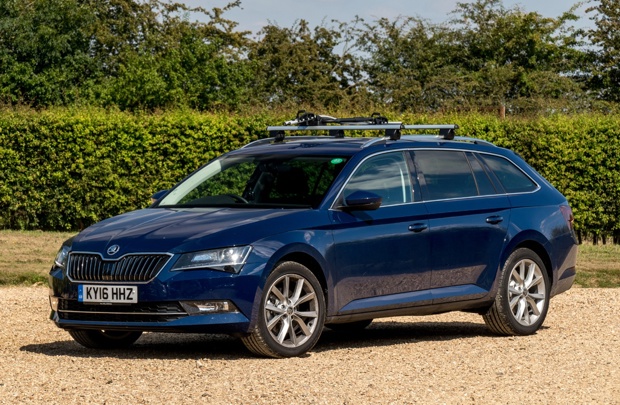
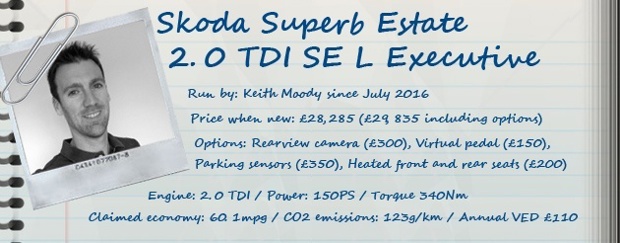
- Skoda Superb Estate joins the fleet
- Superb vs Children
- Superb Estate - it's all about that boot
- Parking sensor problems
- It’s the little touches that make our Skoda estate superb
- Driving abroad in our Skoda Superb estate
- Two wheels or four? With the Superb you don't have to choose
- Does the Skoda Superb suffer build quality issues?
- While the diesel's away, the petrol comes out to play
- What is the fuel economy of our Skoda Superb estate?
Skoda Superb Estate joins the fleet
Is the Skoda Superb Estate the best family load-lugger on the market? Keith has the next six months to find out...

Date: 28 July 2016 | Current mileage: 70 | Claimed economy: 60.4mpg | Actual economy: 46.9mpg
It wasn’t that long ago that Skodas were a bit of a joke. For example: ‘Why do Skodas have heated rear windscreens? So you can keep you hands warm when you’re pushing them.’ Now, I always thought this was a bit unfair as our neighbours had a Skoda and it was in the garage less than our late-model Ford Escort.
Indeed, there are plenty of great old Skodas (see our feature on the best classic Skodas if you need reminding). And some of them are fetching serious money. Take my particular favourite, the MB1000 – one of those is hard to find and you’ll pay a decent chunk of cash for it when you do.
But despite the many examples of Skoda excellence, certain members of the older generation (hello mum!) still turn their noses up at the Skoda brand. And there really is no reason to. Since Volkswagen got involved with the Czech car maker in 1990, Skoda has been a force to be reckoned with.
Which is why we’ll be running this Skoda Superb estate over the next six months. We’ll be putting it through its paces and seeing how it copes with everyday life -from the school run and trips to Tesco - to long-haul family holiday and shuttling various musical instruments from place to place.
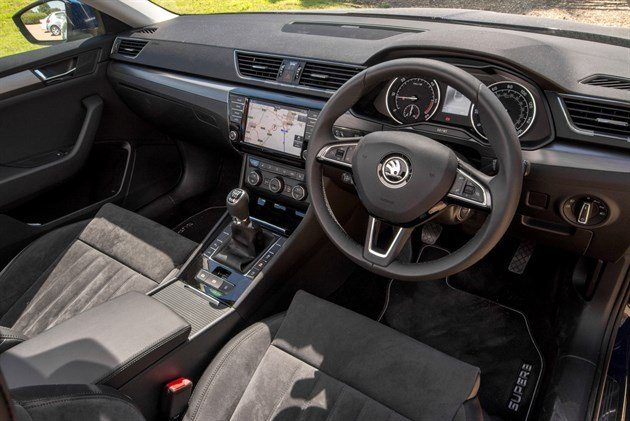
Superb's interior is fuctional and very comfortable.
The model we’ve gone for is SE L Executive Estate – one down from the top of the range. But don’t think that we’re missing out. This car comes loaded with kit. There’s 18-inch alloy wheels, leather steering wheel, adaptive cruise control, xenon headlights, Bluetooth, navigation, DAB, climate control, an electrically operated boot and much much more.
But our favourite items on the car are the touches that you only get on a Skoda Superb. Like the umbrellas stashed in the front doors. Or the ice-scraper located in the fuel filler cap. There’s even a removable LED lamp in the boot. Genius... even if our test car does have a list price of just under £30k.
Power comes courtesy of the 2.0-litre TDI 150PS diesel engine. This has slightly less power than the Volkswagen Passat we ran previously, but it’s still quick enough. The 0-62mph dash comes in at 9.1 seconds while the car’s top speed is 132mph… not that we’ll ever have the chance to get there in the UK.
It’s economical, too – the official figure is 60.1mpg, but we’re hopeful of regularly seeing a number the right side of 50mpg, once we’ve managed to run it in (it came to us with just 70 miles on the clock). When you consider the sheer size of the Superb Estate, we reckon it could just about be the perfect family car. Only time will tell.
Superb vs Children
The Superb gets a baptism of fire as Keith takes it on a family holiday. Surely this will all end well..
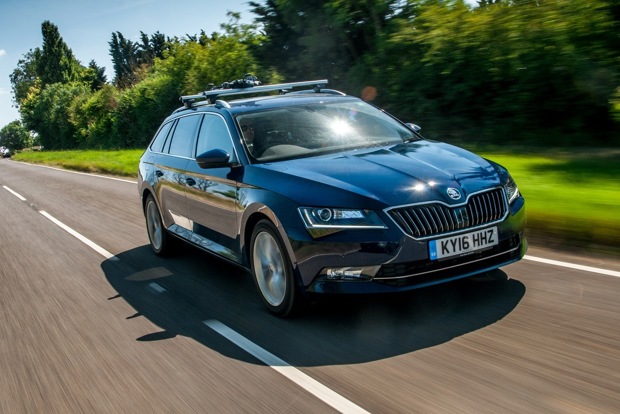
Date: 11 August 2016 | Current mileage: 592 | Claimed economy: 60.4mpg | Actual economy: 47.1mpg
Talk about a baptism of fire. The first long journey faced by our long-term Skoda Superb estate was a family holiday. With school out for summer, this was sure to be a mammoth ride – despite the reasonable mileage. Only in the UK during the summer holidays could a journey of 180 miles take eight hours.
From a purely selfish point of view, I’ll confess I inwardly winced once I remembered the Skoda was a manual gearbox. It’s not that there was anything wrong with it – just that I’d become quite used to clocking up the miles in our DSG-equipped Volkswagen Passat Estate.
The kids had no real complaints. Okay, so the Superb doesn’t have picnic tables like a Citroen C4 Grand Picasso. But what it does have is acres of legroom in the back. In fact, the only car in the Volkswagen Group line up that has more is the long-wheelbase Audi A8. So while a DSG ’box would’ve been nice, eight hours of not being constantly kicked in the back was more than welcome.
Unlike many of its rivals, the Superb’s rear seats aren’t too heavily sculpted or moulded – this makes it much easier to get two child seats to fit in comfortably. And unlike the Audi A6, which the Superb shares its platform with, there’s no stonking great transmission tunnel running down the length of the car.
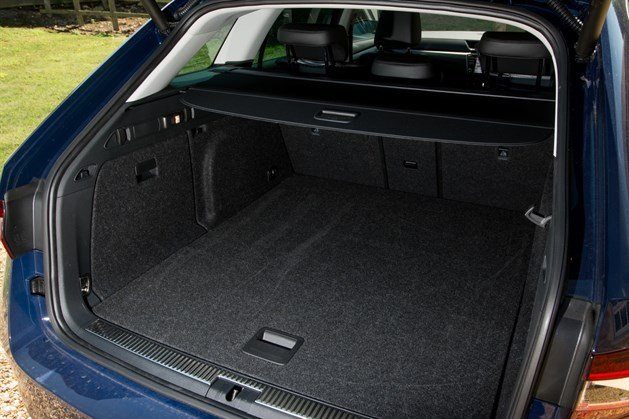
Boot is cavernous - but thin carpet makes it hard to vacuum.
So what? So it means that if the worst comes to the worst a parent can be deployed to entertain the rear seat passengers, that’s what. Do not underestimate the value of having an adult in the back to help to change the headrest mounted DVD players… or lead the Frozen singalong.
In fairness, the kids coped well – and so did the Skoda. Even if it did look like an absolute tip by the time we got to the Lake District. My overriding memory of that holiday is not sitting on a bench eating ice-cream with my family, but instead opening the rear door and seeing my feet covered by an avalanche of half-eaten sausage rolls, empty Fruit Shoot bottles and sweet wrappers.
By the time we got home, I was worried that the best way to get it clean would be to just replace it. During the four hours it took to get it looking something like it a car that had done less than five hundred miles, I drafted two letters to Skoda in my head.
The first was an apology for returning a car in such a state. The second was one to ask them why they didn’t fit better carpets in their car. If you’ve head the pleasures of owning a Ford, it feels like that same stuff – thin, whispy, and impossible to vacuum. They must make it from Velcro off-cuts. It’s clean now, but with two kids it won’t stay that way for long.
Superb Estate - it's all about that boot
Thanks to our big Skoda Superb wagon, Keith is able to indulge his love of large rear ends.

Date: 25 August 2016 | Current mileage: 1012 | Claimed economy: 60.4mpg | Actual economy: 46.8mpg
When it comes to cars, I’m all about the boot. Give me an Audi RS6 Avant over a silly two-seater TT RS any day. Part of it stems from needing to move around a family without sacrificing my love of all things motoring, but the rest is probably because I’m a little unusual… automotively speaking, of course.
Actually, I’m pretty sure that it had something to do with the Volvo 850 estate that got used in the British Touring Cars back in the day. Seeing that go round Oulton Park on three wheels was pretty cool.
So it goes without saying that I’m more than a little bit enamoured with our Superb Estate 4x4. I mean, it would be better if it was a 230PS vRS 4x4 with DSG… but we appreciate that might be a touch pricey to run.
And, let’s face it – down to earth practicality is what the Superb Estate is all about. Just look at the boot space. It’s enormous. A family of four could live in there for a week. We’ve been fortunate enough to try all three wagons built on this platform. That’s the Audi A6 Avant, Volkswagen Passat Estate, and now the Skoda Superb estate.
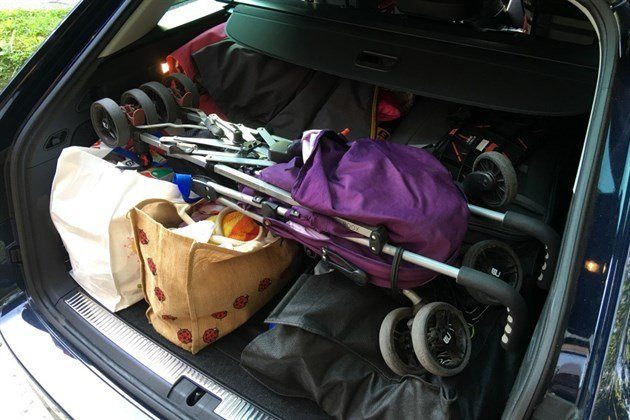
Skoda boot easily coped with a family of four's luggage for a week away
Despite its size the Audi’s boot was a bit more cosy thanks to sound-proofing, plusher carpets and more sculpted seats. The Volkswagen was a good balance between functional and comfortable. But the Skoda just blows them all away when it comes to delivering the goods.
With the seats up, you’ll have 660 litres at your disposal. But with the seats down that rises too 1950 litres. You’ll be hard pushed to find anything else in this class with a boot that big. Best of all, the space is completely usable - thanks to an easy access boot with no fussy lip or suspension struts to get in the way.
Don’t get me wrong – none of these Volkswagen Group load luggers will see you short for space, but with the Skoda you’ll struggle to fill it. And, when you consider the amount of space for rear seat passengers, that’s quite an achievement. We’re told that only the Audi A8 long wheelbase limo has more leg room.
Tip runs, holidays, house moves – the Skoda takes them all in its stride. The only downside is the fact that the rear parking sensors aren’t audible. So next time we’ll be tackling that in a bid to bring our long-termer up to scratch.
Parking sensor problems
A faulty Superb Estate allows us to get an earlier than expected chance to experience Skoda's dealer network.
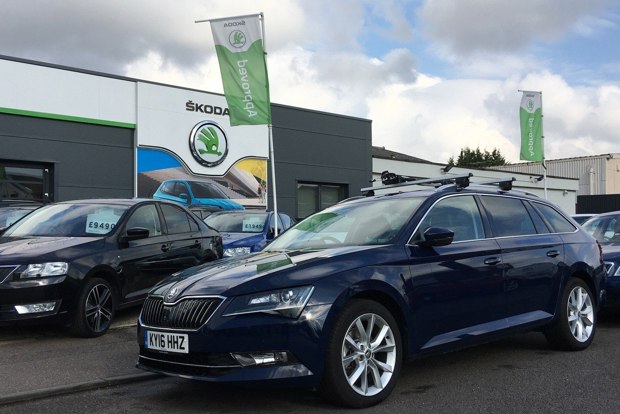
Date: 8 September 2016 | Current mileage: 1504 | Claimed economy: 60.4mpg | Actual economy: 45.8mpg
Ever since we got the keys to our long-term Skoda Superb, the car has had a problem with its parking sensors. They work – but you can barely hear them. It’s not too much of a problem as our car has a reversing camera fitted. But, nevertheless, it’s an annoying niggle.
In older vehicles, I’ve never really felt the need for parking sensors. There could be several reasons for this. First, the visibility is usually much better. Secondly, the styling is often more angular, which makes it much easier to spot the corners when parking. Thirdly, older cars are just… smaller.
Don’t get me wrong, the Superb estate is epic – but you really need some assistance when it comes to parking. So our first attempt to fix the dodgy sensors was to rifle through the menu settings. After a good ten minutes we came across an option that allowed the volume to be adjusted.
But it didn’t make any difference. Next job was to scour the internet for a solution. But while it yielded plenty of results, most were to do with the sensors giving false readings or questions about how to retrofit them.
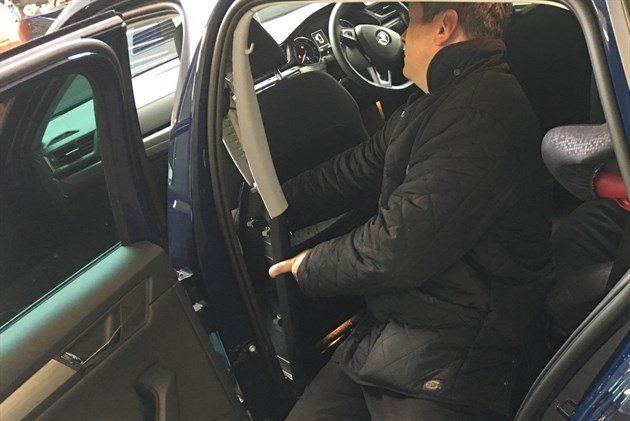
Part of the interior had to be removed to access the parking sensor siren.
So there was nothing for it but to take our car to our local Skoda dealer. I say local, but the nearest ones were 30 miles away. I think it’s fair to say that the Czech marque doesn’t quite have the coverage of some of its rivals so we had to hit the highway.
After arriving at Progress Skoda in Bedford, we handed over the keys to the service team and headed for the free tea and wi-fi. The only other person in the dealership was a chap who used his car as a minicab. While his Octavia hadn’t been quite as reliable as he’d expected, he rated the service team highly. Let’s just hope they could solve the Superb’s problem, too.
A quick test drive and diagnostics check, it was decided that the siren (which emits the noise of the beeps in the cabin) was faulty. Luckily, they had a spare one to hand. After dismantling the interior to get it (always a terrifying job on modern cars), it was a simple enough swap.
Overall, we were impressed by the dealer. The service team understood the problem, and were quick to book us in. Best of all, they were able to solve the problem and send us home in a car that was cleaner than when it arrived. Plus the reversing sensors are now audible. Despite a few bumps and niggles, the Skoda experience isn’t turning out to be too bad.
It’s the little touches that make our Skoda estate superb
Our long-term Skoda is full of hidden surprises designed to make life easier.
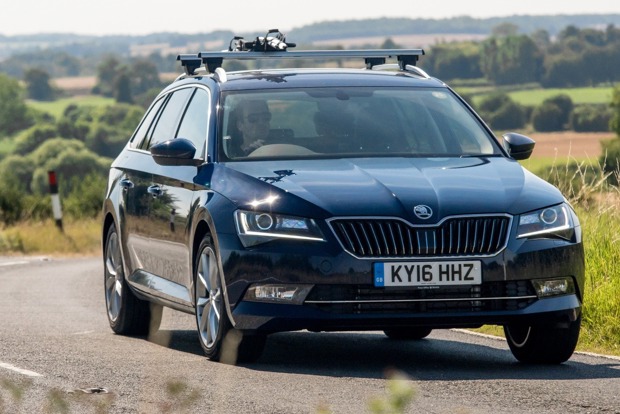
Date: 22 September 2016 | Current mileage: 1998 | Claimed economy: 60.4mpg | Actual economy: 43.8mpg
It’s the little touches that make our long-term Skoda Superb estate… Superb. You could say this about any car, but the Superb's hidden gems put a smile on my face in a way that its sisters cars (the Volkswagen Passat Estate and Audi A6 Avant) never did.
For example, it was typically Autumnal day on Sunday. Rain. Wind. And more rain. The kids and I had to go into town to get a present for a birthday party – an idea that didn’t appeal to my two primary school-age daughters. After several minutes of stomping and slammed doors, they suddenly remember that the Skoda was packing two mighty fine umbreallas in its front doors. The rain clouds cleared the the sun came out, metaphorically speaking.
These umbrellas hidden in the doors are a nod to the Skoda of old. When the Superb was used a diplomatsic car for civic duties in the 1930s and 1940s in what was then Czechoslovakia. Those V8 driven monsters were imposing things, despite also seeing service as ambulances and various other public service vehicles.
Other hidden treasures? You bet. Flip the fuel filler cap and you’ll find that there’s a handy ice-scraper stowed here for those frosty winter mornings (as well as the tyre pressures). Okay, so it’s not the best scraper we’ve ever used, but it is pretty substantial and should last you a few years. I did wonder how easy it would be to get at on those really cold mornings when the doors are frozen, though.

Superb comes with two umbrellas - one in each of the front doors.
The fun doesn’t end there, either. There’s a (detachable) LED torch in the boot to help you find a missing teddy when you arrive home from a long drive at 3am and all the street lights are out. It’s probably got other uses, but that’s what ours gets used for most.
One of the things that really makes the Skoda easy to live with on a day-to-day basis is the ability to set it up for different drivers. You can create different user accounts - I have one and my wife has another. The car’s clever enough to remember each person’s preferences. So, for example, it knows that I prefer to keep the car in sport mode whereas my wife prefers to have it in eco.
And thanks to the optional memory seats, you don’t have to spend ages trying to get comfy – just push a button and it’s good to go. It even adjusts the wing mirrors (and will remember the angle of adjustment you prefer when reversing) so all you have to do is take care of the rear view mirror.
The Superb gets another brownie point by having a proper seatbelt for the middle passenger in the rear-seat (rather than just a lap belt). And even though our test car is four-wheel drive, the transmission tunnel isn’t that intrusive, which makes it a proper third seat in the back. So far, so good - the Skoda is living up to its reputation as a fine family wagon.
Driving abroad in our Skoda Superb estate
We put our long-term load lugger through its paces on the continent
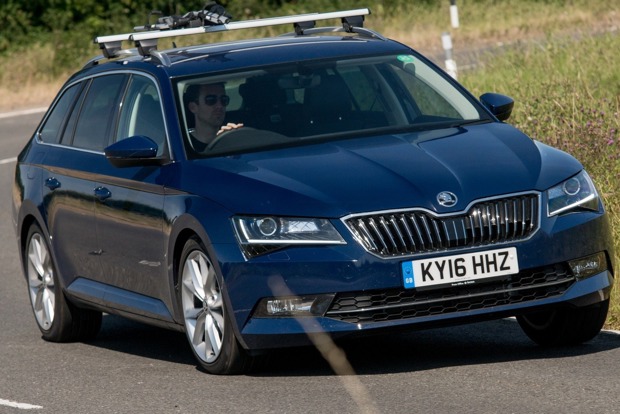
Date: 6 October 2016 | Current mileage: 2459 | Claimed economy: 60.4mpg | Actual economy: 44.3mpg
With the summer holidays drawing to a close, we decided to squeeze in a last-minute getaway with the kids. Our destination of choice was Disneyland Paris – perfect for a pair of princess-obsessed little ladies. But would the Skoda be up to the task of tackling the autoroutes? There was only one way to find out.
First things first, though – it was time to give the Skoda a pre-flight check. A warning light on the dash was illuminated to tell me that the tyre pressures were not as they should be. With fresh air filling the road rubber, re-setting the pressures is done with a touch of a button on the LCD screen. Fluid levels were fine so I threw my AA Euro Travel Kit (complete with breathalyser) in the boot (and the hi-vis vests in the front) and commenced boarding passengers.
As we saw at the start of the summer, accommodating a family of four and their luggage is what the Superb is all about. Its epic boot makes short work of our stroller and all the suitcases. Suitcases for clothes. Suitcases for dolls. Suitcases for the dolls suitcases. There was even space left to fill up with bags of food from the French hypermarche once we crossed over the boarder.
All that was left to do was load up our Spotify playlists with Disney tunes and hit the roads with Let It Go blaring out of the speakers. We were about two minutes and 13 seconds from home when we hit the first snag. Tears, tantrums, and tragedy. What was the matter, I enquired? ‘I DON’T LIKE FROZEN! ITS TOO SAD’ screamed my eldest. And, I’ll have to admit that she’s got a point. But, the themes of orphan children and two cases of attempted sororicide aside, it was hardly the Skoda’s fault.

In fact, throughout the duration of the trip, we were regularly thankful the CarPlay option box had been ticked. This allows seamless integration with your Apple iPhone, giving you easy access to music, maps, messages, and mobile numbers. The navigation successfully shepherded us away from the worst of the Paris traffic, while the Spotify app made it easy to listen to downloaded music (other than the Frozen OST).
As we delicately balanced pastries and pasties during the Eurotunnel crossing, we delved into the Skoda and Apple menus to change over the units (miles to kilometres) and as soon as we got off the train a message binged up on the dash to say that the headlights had been adjusted for driving on the right side of the road. Which is technically the wrong side, but there you go.
Once out on the motorway, we set a comfortable cruising speed and let the adaptive speed system work its magic - braking and accelerating independently in traffic and basically taking the stress out of rush hour. If you’re planning to make the most of this system, you’ll need to spec the DSG gearbox – otherwise in manual form you get endless messages asking you to brake or change gear.
Other criticisms? There were only a few. For example, we needed to engage sport mode to make sure the car didn’t run out of steam on the hills. And we noticed it was hard to keep dust off the interior (note to self – get a microfibre cloth handy). As you can tell, that seven-hour journey just flew by... But once again, the Skoda proved itself to be a hugely competent family car. Certainly more compentent than I was at driving on the wrong side of the road, anyway.
Two wheels or four? With the Superb you don't have to choose
Skoda's rich cycling heritage makes it easy to transport road bikes in the Superb estate
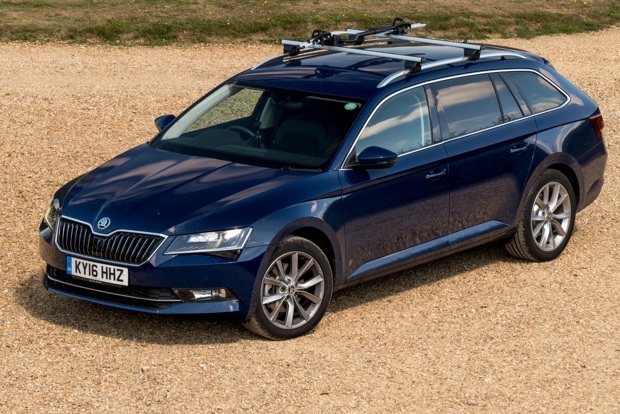
Date: 20 October 2016 | Current mileage: 2877 | Claimed economy: 60.4mpg | Actual economy: 42.9mpg
There are only a few things I enjoy as much cars, and one of those is biking. Don’t get me wrong – four wheels will always be king, but I do love getting out on the road bike. So when I saw there was an option for a bike rack to be fitted to our long-term Skoda Superb estate, I had to tick it.
It makes sense when you think about it. Like so many car manufacturers, Skoda made two-wheel transport long before it made four. The Skoda story started way back in 1895 when two cycling fanatics got together to make and sell bikes. Mechanic Vaclav Laurin and bookseller Vaclav Klement sold their two wheel offerings under the name Slavia. The bikes sold so well that by 1899 they were knocking out motorbikes under the name Laurin & Klement.
So how did they go from Laurin & Klement to Skoda? Well, the outbreak of war in 1914 meant the company swapped motors for munitions. In the face of tough economic conditions in Czechoslovakia, the pair needed help from a strong industrial partner. That help came from engineering firm Pizen Skodovka and the subsequent merger in 1925 created Skoda.
After some success, challenging political and economical conditions meant the future of the company was uncertain. By the 1980s its cars were out of date and largely out of favour. But with the collapse of the Berlin Wall, a new free market economy arrived and Skoda was once again able to look for a strong partner. A joint venture with Volkswagen followed in 1990 and the rest, as they say, is history.
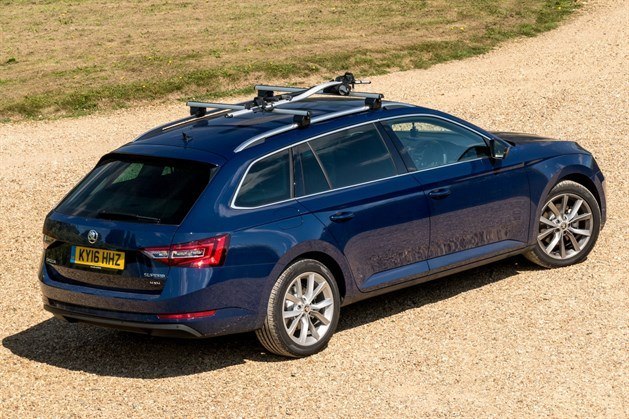
Skoda Superb estate's bike rack is easy to use.
Not that I’ll be breaking any history records on my bike. But, nevertheless, it’s something I enjoy and the part of the world that I call home has some truly fantastic scenery to explore out on two wheels. And doing that in our long-term Superb Estate couldn’t be easier.
If I’m out with my daughter, then her bike can go in the boot while mine sits on the rack on top. If you’re also into the great outdoors, you’ll want to put a tarpaulin or protective sheet down in the boot though. Carpets are one of the most obvious areas where the company has opted to save a bit of cash. As such, the material is thin and wispy – like Velcro. And just as hard to clean.
Luckily, you’ll have a bit of extra time on your hands as, for once, fitting the bike to the bike rack doesn’t require an engineering degree. Even better, it’s unlikely to inflict harm on your vehicle on the level we witnessed with our Volkswagen Passat estate.
All that’s required to fit the bike to the car is to attach it to the ski-shaped fastener, and lift the unit up onto the roof rack. Granted, I’d never do this with my wife’s shopping bike as its too heavy, but even with my entry-level road bike (which isn’t light compared to some people’s) it’s not too much of a drama. All of which means the Skoda, once again, makes it easy to go about your business with the minimum of fuss. I’m not sure what else you could want from a car.
Does the Skoda Superb suffer build quality issues?
Time to get the niggles on our long-term diesel estate sorted.

Date: 3 November 2016 | Current mileage: 3401 | Claimed economy: 60.4mpg | Actual economy: 42.9mpg
As fond of the Skoda Superb as we are, it’s time with us has not been entirely trouble free. When it arrived at the office, we immediately noticed that its rear parking sensors weren’t working properly. They worked -but were barely audible. And, despite adjusting the volume controls in the car’s menu, they were certainly never loud enough to serve their purpose.
A trip to the Progress Skoda dealership in Bedfordshire revealed that the items were faulty and needed to be replaced. A process that was easily sorted as the dealer had a spare part available. It also gave us a chance to learn a bit more about the full customer experience – namely that dealer network coverage in our area was a 30-minute trip away, but that once we arrived on site we were certainly well looked after.
The second, and less pressing, issue with the car was glovebox fit. Or rather, lack of fit. It looked like someone had tried to shut the glovebox with something in it that was too big, forcing the lid off its hinges. But the car arrived like that so unless it had happened on the few miles it clocked up between collection and delivery, we have to assume that it was just never fitted properly.
Over its time with us, the problem had progressively gotten worse – to the point where the glovebox either wouldn’t open, or wouldn’t shut. During one such episode, the top catch fell apart as we were trying to shut it. There was nothing for it but to ask Skoda to have a look at it.
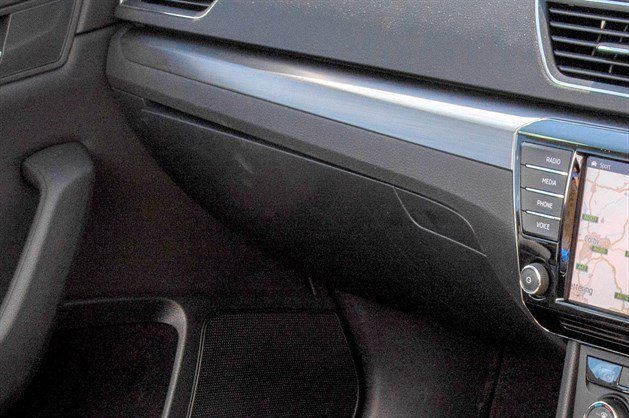
Superb's glovebox never fitted correctly.
They collected the car within the week, but didn’t leave us Superb-less, bringing instead a 1.4-litre petrol hatchback for us to try. This car suffered no build quality issues – and both the parking sensors and the glovebox were working as they should.
The two-wheel drive, petrol, DSG, hatchback did, however, provide an interesting contrast to our four-wheel drive, diesel, manual estate. Although the hatch doesn’t have quite the copious amount of luggage space, it’s still massive. With the seats up, the hatch has 625 litres compared to the estate’s 660. With the seats down, the estate wins with 1900 litres to 1700.
Price wise, the difference the two body styles is £1200. Entry-level hatchbacks start at £19,060, while you’ll have to pay at least £20,260. And if you’re wondering what exactly you get for your money, don’t worry – even the entry-level models are well specified. A basic ‘S’ model comes equipped with alloy wheels, front fog lights, air-conditioning and a five-inch touchscreen as standard. An electronic parking brake is also included - as well as an autohold function for hill starts.
Whichever one you choose, you won’t be disappointed. Both models are easy to drive, quiet on the road and more than capable of looking after a family.
While the diesel's away, the petrol comes out to play
We swap our diesel estate for a petrol hatch - which is better?

Date: 17 November 2016 | Current mileage: 3925 | Claimed economy: 60.4mpg | Actual economy: 43.1mpg
While our long-term Superb estate diesel was away having its maladies attended to, Skoda lent us a different flavour Superb to sample – a petrol-powered hatchback. Being of the family persuasion, my natural instinct is always to go for a diesel estate – so how would a petrol hatch measure up? Time to find out.
My new ride for the next week or so was a Superb SE L Executive hatch DSG, which is the same trim level as our manual estate only with a £1520 cheaper on-the-road price (the difference accounting for estate, diesel and four-wheel drive premiums).
Don’t think the hatch is short on space, though. Not only does it boast similar levels of rear legroom, the but boot is cavernous – a total of 1700 (625 seats up) litres compared to the estate’s 1950 (660) litres. Not bad at all.
Naturally, the petrol engine is quieter than the diesel – much quieter at idle. You also have to work it harder, which poses a few issues. Both engines have the same 150PS power output, but as you’d expect the delivery is very different. The diesel estate benefits from four wheel drive and easily copes if you need to press on, while the front-wheel drive petrol is more likely to scrabble its tyres if you’re in a rush.
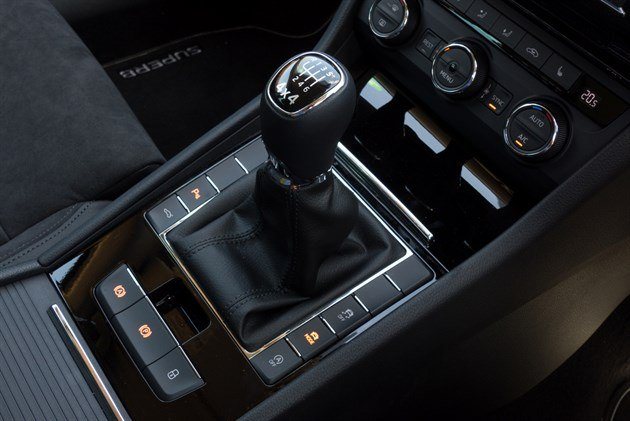
After spending time with the petrol hatch, would we swap our diesel 4x4 estate?
Overtaking slow-moving vehicles uphill can also leave the petrol feeling hard-pressed and breathless, while the diesel feels more at ease completing the task in hand. Of course, while you gain torque from the diesel, you’ll also notice an increase in engine noise.
As far as fuel economy goes, the oil-burner promises 60.1mpg, while the petrol’s official combined figure is 55.4mpg. Our Real MPG data mirrors our own experience with the models with engines returning an average of 77% of the official figure. In this car, the diesel comes in at 43.9mpg and the petrol 39.3mpg.
After a week with both cars, we were pleasantly surprised with the space offered in the hatch – but still preferred the diesel unit, especially hooked up to the excellent four-wheel drive version. Adding a DSG ’box to our long-termer’s spec sheet would’ve have been the icing on the cake, although the manual is more than capable (we’re just lazy).
Remember, though, this isn’t a scientific comparison – more a list of general points to consider if you can’t quite make your mind up on whether you should get the petrol or the diesel Superb. The only way to answer that question is to get behind the wheel of both versions yourself.
What is the fuel economy of our Skoda Superb estate?
Find out what the real world miles per gallon of our long-term load-lugger is

Date: 1 December 2016 | Current mileage: 5111 | Claimed economy: 60.4mpg | Actual economy: 46.5mpg
When it comes to buying a car, fuel economy is one of the most important factors people consider – after the initial purchase price. After all, no-one wants to blow their budget on a diesel-sipping family car only to find that it’s thirstier than the petrol variant they just traded in.
But there’s a problem with fuel economy figures – they represent a style and a kind of driving that simply doesn’t exist. What makes it worse is that so many of us simply accept that they’ll never get anywhere near the official figures and move on.
Even the Government admits the test is flawed. The Department for Transport website says, ‘The fuel consumption figures quoted in this guide are obtained under specific test conditions, and therefore may not necessarily be achieved under ‘real life’ driving conditions.’
Which is why we created RealMPG – so that drivers could share their real-world fuel economy figures and potential purchasers would have something to concrete to go on when they’re working out how much their new car will cost them to run.
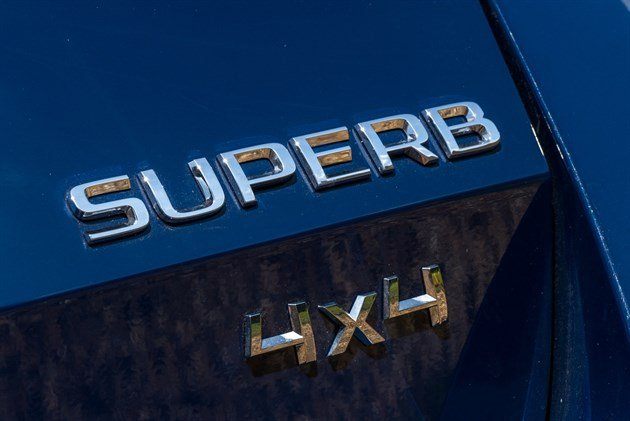
All-wheel drive is well-suited to our diesel-powered Superb estate.
So how does our Skoda stack up against the figures? Officially, it’s supposed to get 60mpg – but real world driving means the car returns about 45mpg, depending on the time of year and the number of long journeys we do.
It takes the kids to school in stop-start traffic during the weeks, before heading up the motorway to the office. At the weekends its with us as we head off to guitar lessons, the shops, and other local highlights. Then there’s the occasional long run to see family. And, as the weather gets colder, it sits on the drive warming up while I scrape the ice off the windscreen.
A fairly normal life, then. And the big Skoda is returning a fuel consumption figure that we’d expect. It’s a big car, don’t forget, and that four-wheel drive system only adds to the weight (although as the roads have got cold and icy, having drive sent to all four wheels is something we’re very grateful for).
Obviously, we'd be happier if the fuel consumption stayed in the high 40s. You can see 50mpg, but you'll need to stick at 56mph on the motorway. At least it meets our expectations - although it says something when you expect to be disappointed.
